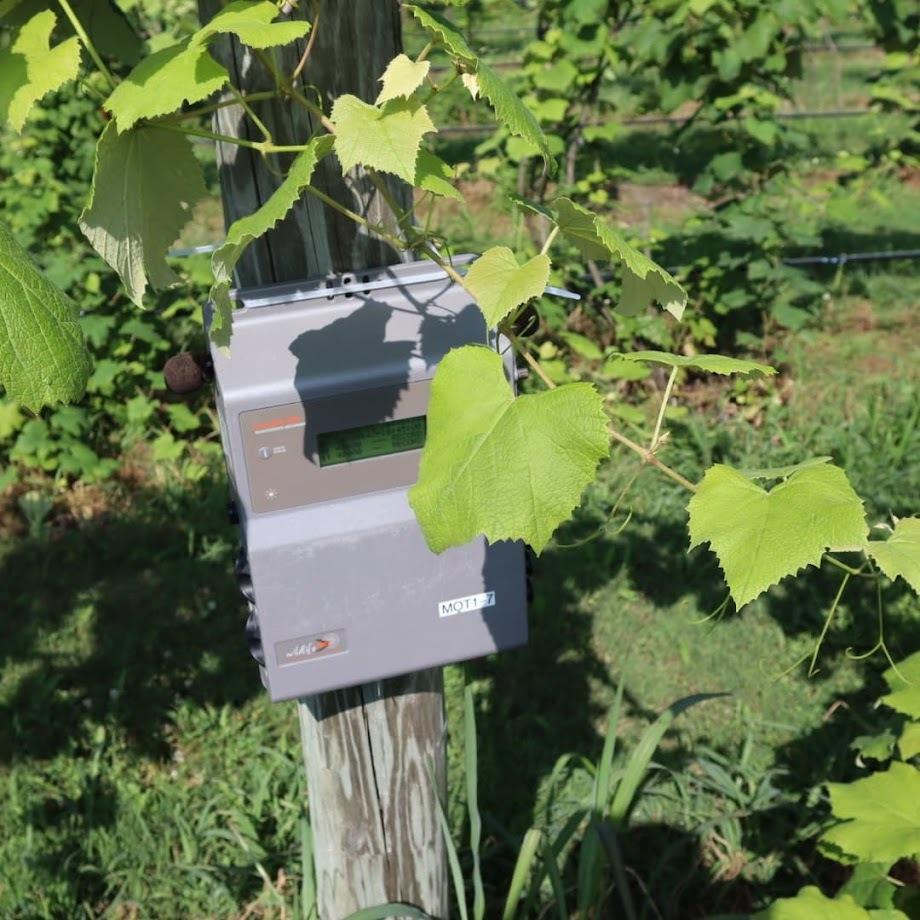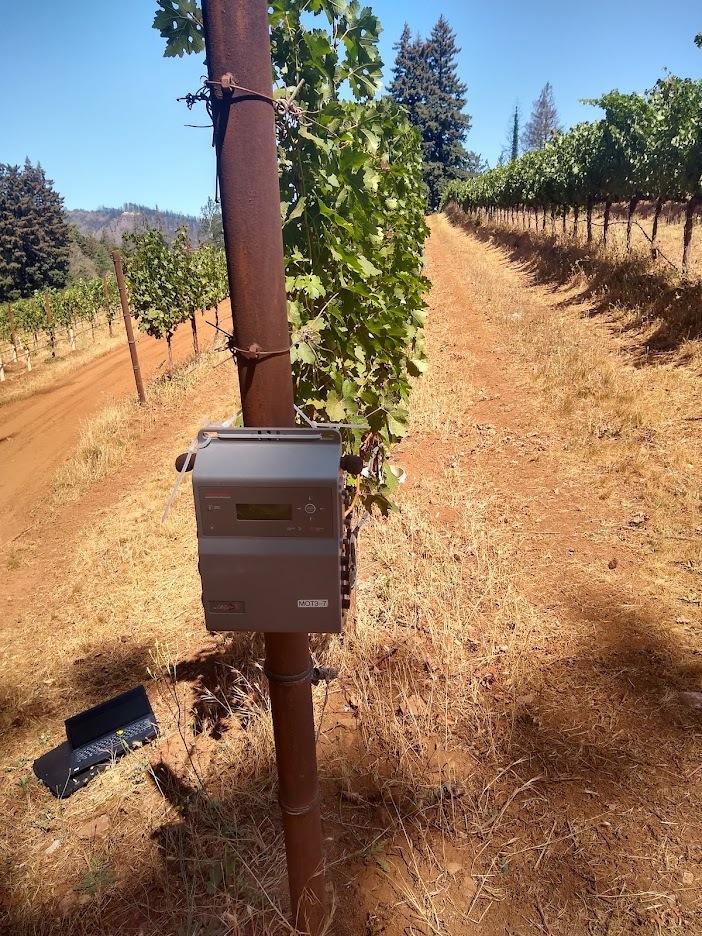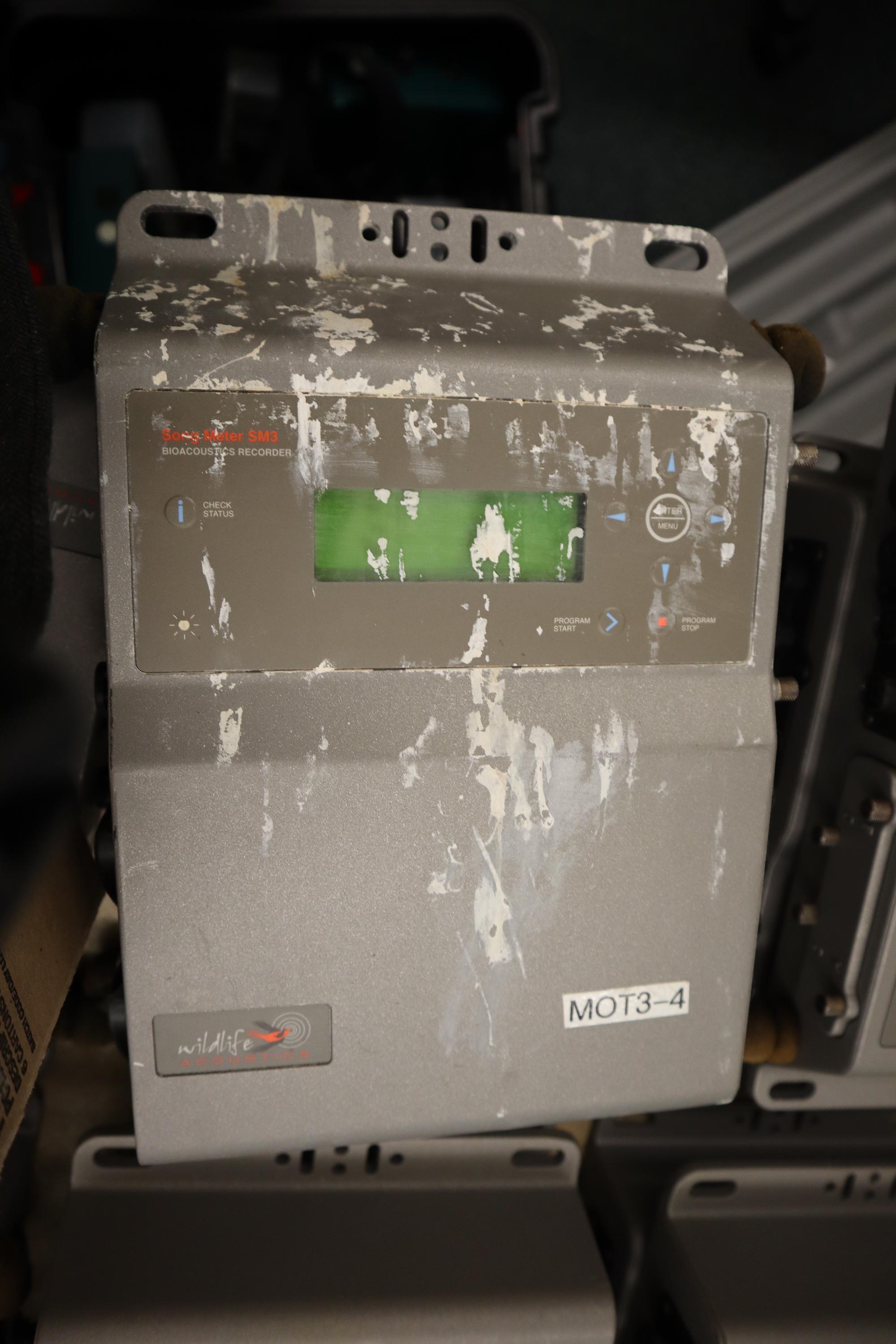
My conservation tech experience has been primarily focused around the use of acoustic sensors. I’ve used most of the on-the-market solutions at least once, with extensive experience with Wildlife Acoustics products. I’ve deployed and serviced Song Meter 2s, 3s, 4s, and Audiomoths, as well as used Song Meter Mini and Micro units and frontier labs BARs as product demos. I’ve also been involved with deployments in a number of locations ranging from Hawaii to Colombia to the US Midwest, either directly in terms of deploying and servicing sensors, or indirectly in terms of analyzing data and consulting with people doing the fieldwork.


Some of David's acoustic equipment out in the elements.
"A researcher always has to consider whether, by protecting a sensor system from the elements, they are reducing its ability to provide ecologically useful information."
One of the biggest points of failure we’ve dealt with in our work is sensors breaking. Whether it’s due to constant rain overwhelming the hydrophobic membrane in a microphone or curious wildlife nibbling on what may seem to them to be an oddly shaped and colored branch, the environments in which we deploy conservation tech have proven time and again to be inhospitable to those technologies. This can become an issue when one loses significant portions of data due to microphone failures that cannot be detected until after the fact (that is, either when a sensor is serviced and damage can be seen visually, or once data analysis identifies periods of time when a microphone may have failed).
In any of these situations, the first challenge has always been to identify points of failure to begin with. First, to identify that a failure has occurred, then to identify—or at least develop a reasonably and carefully considered hypothesis about—the underlying causes of this failure. Sometimes this is easy, especially when the sensor can be inspected directly; other times, it is much more difficult, as when an expert must communicate with a field tech by phone or video call from a remote location.

A Wildlife Acoustics Song Meter 3 that has been covered in seabird guano while deployed at a colony in Tierra del Fuego. While this unit is still functional, birds can and do get very close to sensors and this can damage them.
Any response to sensor damage has to follow the same principles followed by any human system seeking to improve its resilience. First, prevent damage wherever possible; second, improve the ability of the system to respond to disturbance. We see the same concepts show up in, for example, discussions of climate change and their uses of the concepts of both mitigation and adaptation. In the case of conservation tech, this has often been a question of trial and error. Sensor hardware is extremely variable and so are the natural systems within which it exists. Moreover, a researcher always has to consider whether, by protecting a sensor system from the elements, they are reducing its ability to provide ecologically useful information.

A Wildlife Acoustic Song Meter 2 that has been clawed or gouged by an unknown animal. This kind of damage can lead to water intrusion.
For example, in cases where a microphone is being damaged by constant rain, it may make sense to place a physical barrier of wood, metal, or plastic above the microphone like a roof or hat. However, doing so brings with it a new host of concerns, including whether the sound of raindrop impact on the cover will mask key signals, or whether the cover itself will prevent the sensor from picking up aerial sound sources as effectively. Each of these is a unique concern, created by a combination of a study site, with its specific opportunities and limitations; a sensor platform, with its advantages and vulnerabilities; and a research question, with the particular aspects of performance one needs to preserve or is willing to sacrifice. Because of this, there are very rarely, if ever, pre-established guidelines that are applicable to a particular case. It falls to each individual researcher to attempt to determine a solution.

A Wildlife Acoustics Song Meter 4 that has had its foam windscreens gnawed away by an animal.
If anything, that has been the biggest lesson I have learned from trying to deal with these sensor failures: don’t be afraid to just try stuff. For example, it turns out that dipping the foam wind-guard of a microphone in local water and allowing it to dry before installing can reduce animals gnawing on a microphone at some sites in the US Midwest.
This was an idea that originated with a late-night session of brainstorming and was eventually tried based on the immortal phrase: “Eh, what’s the worst that can happen? It doesn’t work." If you’re already losing data, the worst that any attempted solution can result in is a continued loss of data.

A broken Wildlife Acoustics Song Meter 2 Microphone that has been broken by impact, likely from an animal. Luckily, the sensor we deployed this microphone on was recording in stereo and we got good data on the other channel until we could swap in a fresh unbroken microphone.
The second and final piece of advice I would offer is: trust yourself. Nobody is going to know the specific combination of specific deployment location, technological system deployed, and the research question or conservation problem that the deployment is trying to tackle any better than you will. This means that, much as it might be appealing to seek out additional expertise - and goodness knows I’ve wanted the reassurance of second or third opinions a lot of the time - sometimes you just have to follow your own intuition and, as mentioned above, go through a process of trial and error.
Download the Case Study
This case study is the seventh in our Technical Difficulties Editorial Series. The full series will be available as a downloadable issue in December 2021. This case study is now available for download here.
About the Author
David Savage is a PhD candidate at the Center for Global Soundscapes, part of Purdue University's department of Forestry and Natural Resources. His work focuses on applications of technology, especially acoustic sensors, to improve policymaking and conservation decision-making, especially in agricultural systems.



Add the first post in this thread.